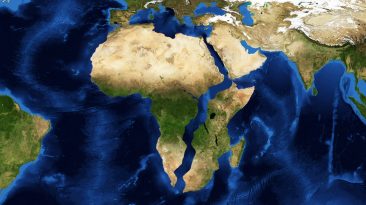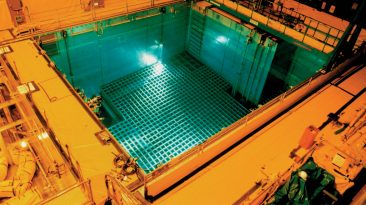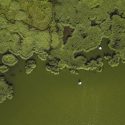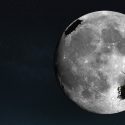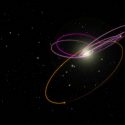See that bright object in the sky? That’s Andromeda – the closest major galaxy to our Milky Way and the most distant thing you can see with the naked eye. And… it’s racing toward us at a rate of 110 km per second (68 miles per second). Eventually, 4 billion years from now, Andromeda will merge our Milky Way in a huge galactic collision.
But what if these galaxies were to collide tomorrow? What would happen?
Would all the stars and planets suddenly plow into each other? Could our Solar System survive this massive crash?
And what would this galactic light show look like from Earth? Here’s what would happen if the Milky Way and the Andromeda galaxy collided.
There are at least 100 billion galaxies in the observable universe, all colliding with each other. Larger galaxies merge about every 9 billion years, while smaller ones slam into each other even more often. But wait, what about dark energy? Isn’t this hypothesized force pulling the universe and everything in it apart?
It sure is. For nearby galaxies though, gravity takes over. Andromeda and Milky Way are no exception. They both contain central supermassive black holes, that will eventually mesh the two star systems together. Imagine if that gigantic collision were to happen tomorrow. What would that look like?
Andromeda is pretty far away. It couldn’t just overcome the distance of 2.5 million light years in a single day. Let’s assume that, somehow, the supermassive black hole in the center of the Milky Way increased its gravitational pull on Andromeda’s black hole; and “The Big Crunch” happened 4 billion years earlier than expected. What’s next?
First, there would be no Milky Way, and no Andromeda. The two spiral galaxies would become a totally different type of galaxy – an elliptical one. You can call the new galaxy “Milkomeda,” or “Milkdromeda” – whichever one you prefer.
Once Andromeda invaded Milky Way’s personal space, the Sun and our entire Solar System would be forced to the outskirts of the newly formed galaxy – 26,000 light years further away.
And that’s the best-case scenario. In the worse-case one, we might end up in a galactic Siberia – 160,000 light years away from Milkomeda’s center. What about all the stars in both galaxies? Would they collide with each other?
Some of them would. But even though Milky Way counts around 250 billion stars, and Andromeda has over a trillion of them, all those stars are separated by light-years of empty space. It’s unlikely that many of them would merge. Instead, they’d just get scattered into different orbits.
Ooooh – I forgot to mention, we invited a third galaxy to this party….the Triangulum galaxy, or M33, smaller satellite galaxy of Andromeda, will be joining us as well. This is shaping up to be a massive galactic mashup.
For us Earthlings, this would look just incredible. The bright core of the new supergalaxy would set the night sky ablaze. Eventually, the two supermassive black holes at the center of these galaxies would come so close to each other, that they themselves would merge. All the gas taken up by this monstrous black hole would form a bright quasar at the center of the galaxy.
Another spectacular show for us here on Earth. Too bad, in reality our planet won’t live long enough to see any of it. By the time Andromeda slams into Milky Way, the Sun would have already turned into a Red Giant and swallowed up the entire Earth.
Subscribe to What-If on YouTube or follow the show on Facebook Watch.















